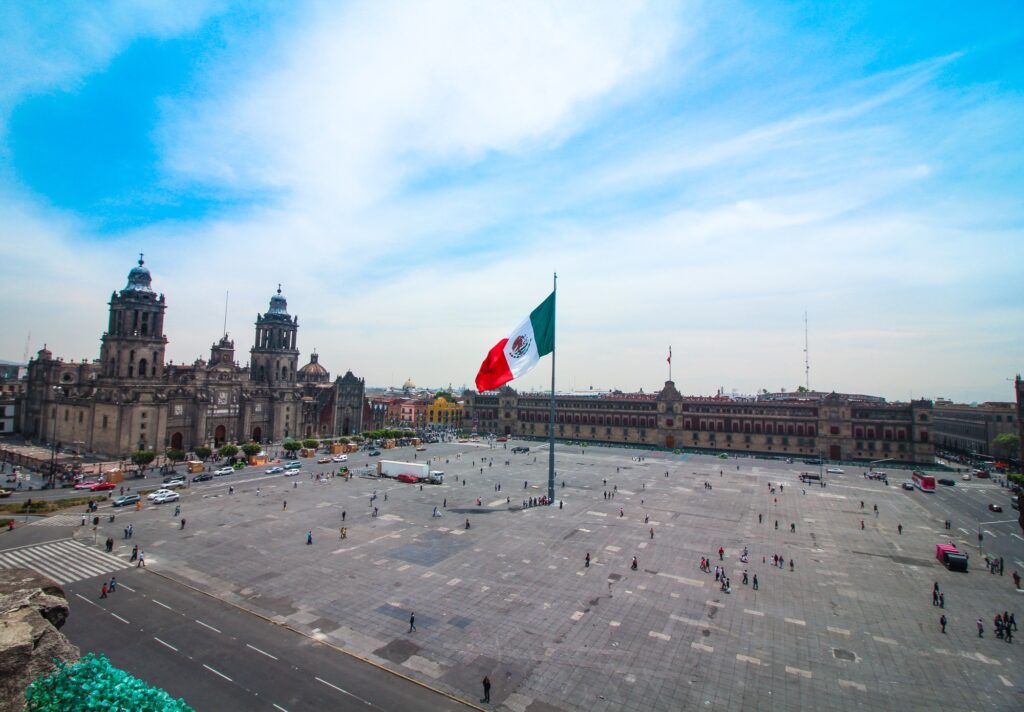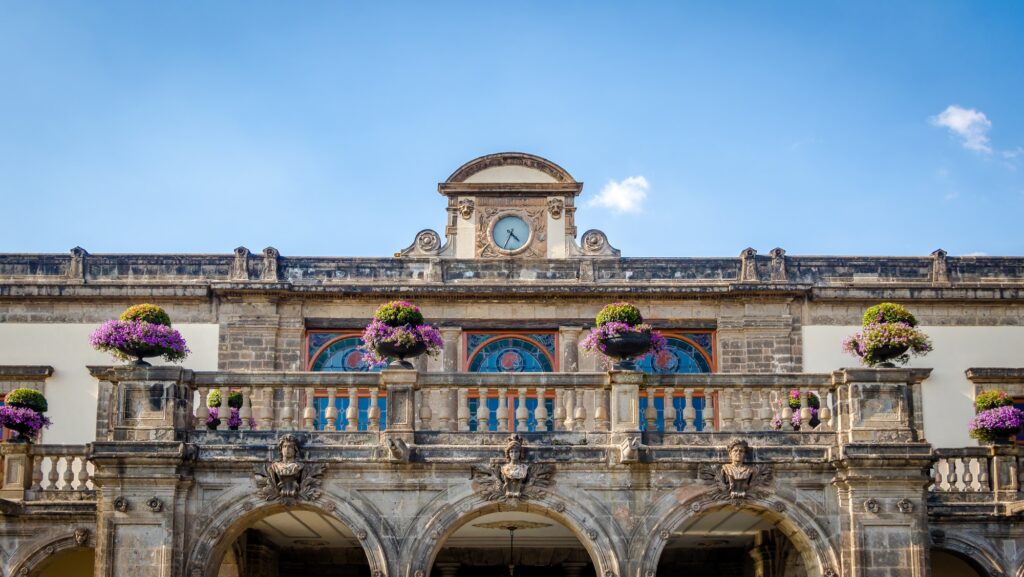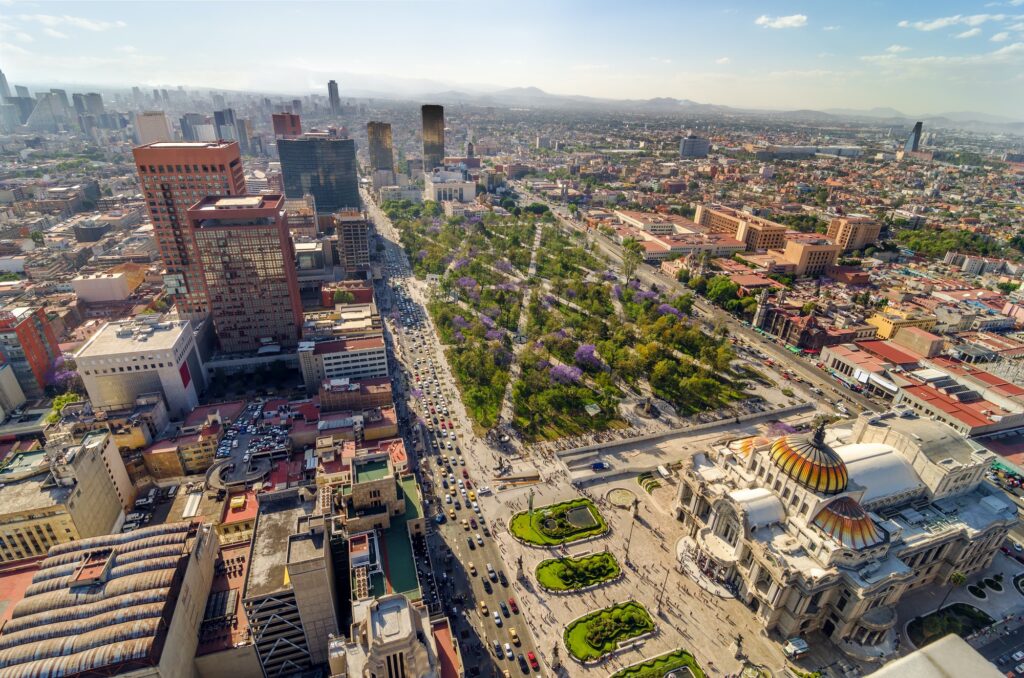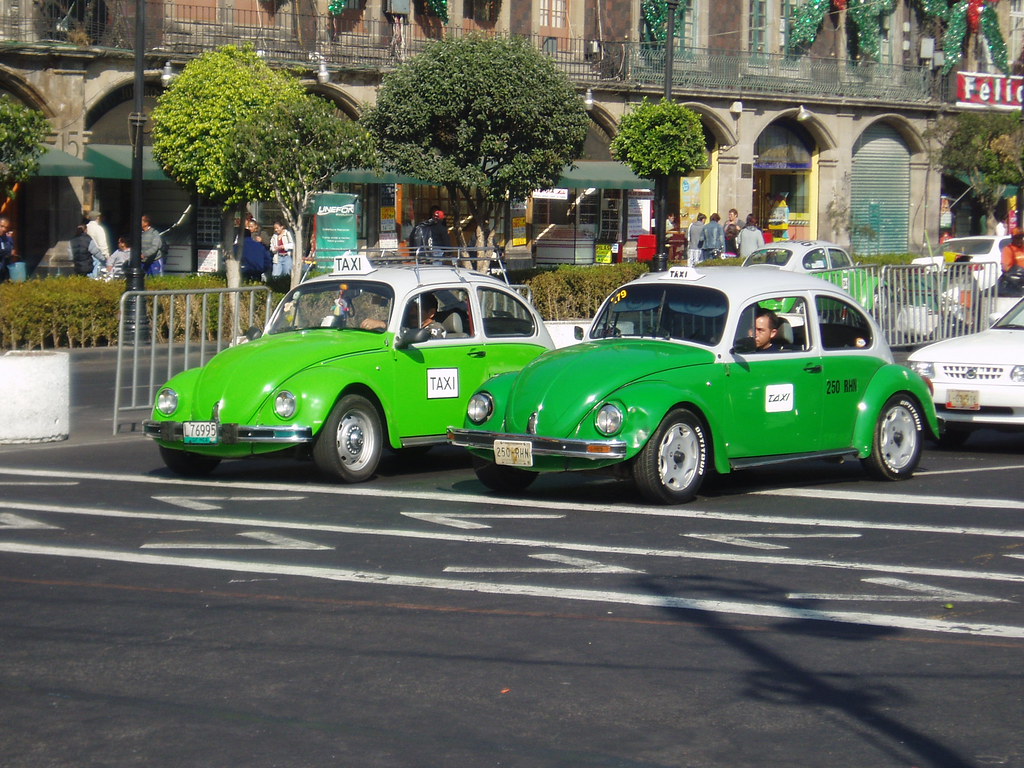30 Interesting Facts About Mexico City

Introduction
Mexico City is one of the largest and most vibrant cities in the world. With over 700 years of rich history and culture, this bustling metropolis has many fascinating stories to tell.
As the capital of Mexico and the most populous city in North America, Mexico City is a sprawling, eclectic place with over 21 million residents from diverse backgrounds. Nicknamed the “City of Palaces“, it contains nearly 1,500 historic buildings in the city center alone.
Beyond its magnificent architecture, Mexico City boasts world-class museums, colorful markets, beautiful parks and gardens, and mouthwatering cuisine. Yet what’s most captivating are the many layers of history and culture visible throughout this dynamic city.
Let’s explore some interesting facts about Mexico City’s past, impressive landmarks, delectable food, and more!
Mexico City’s History

- Mexico City was originally built on an island in Lake Texcoco by the Aztecs in 13251. The city was called Tenochtitlan and became the dominant power in the region.
- When Spanish conquistador Hernán Cortés arrived in 1521, he was stunned to find a vast, sophisticated Aztec city with advanced infrastructure and 200,000+ inhabitants – larger than any European city at the time.
- After conquering Tenochtitlan, Cortés rebuilt the destroyed city following a European grid plan. Mexico City became the capital of New Spain and the hub of Spanish colonial power.
- Many colonial buildings from the 16th-18th centuries remain standing in Mexico City’s historical center, now a UNESCO World Heritage Site. Ancient Aztec ruins are also visible, like the Templo Mayor.
- Mexico City became the capital of the new nation of Mexico when it gained independence from Spain in 1821 after an 11-year war.
Cultural Facts

- With over 170 museums, Mexico City contains more museums than any other city in the world2 besides London. Prominent museums include the National Museum of Anthropology, Soumaya Museum, and the Frida Kahlo House and Museum.
- There are approximately 128 cinemas and over 163 theaters in Mexico City catering to the arts and entertainment scene. Events like film festivals, art exhibits, and music concerts happen year-round.
- Lucha libre (Mexican wrestling) features colorful masks and acrobatic moves. Major fights happen at Arena México, drawing enthusiastic crowds who are deeply invested in the stories and characters.
- Mexico City has a vibrant street food culture, with options ranging from tacos al pastor (spit-roasted pork) to esquites (corn kernels with chili powder and lime). Many vendors set up during the night in plazas.
- The city contains multiple public universities, most notably the National Autonomous University of Mexico (UNAM). Founded in 1551, it is the oldest university in North America.
Impressive Landmarks

- Chapultepec Castle sits atop Chapultepec Hill, one of the highest points in the city. It currently houses the National Museum of History but was originally an imperial residence.
- The Angel of Independence monument on Reforma Boulevard is a famous landmark depicting a golden angel leading Mexico into independence. Completed in 1910, it draws marching crowds during protests and celebrations.
- Palacio de Bellas Artes is an immense white-marble cultural center completed in 1934, dedicated to music, theater, dance, and visual arts. The stunning Art Nouveau exterior and murals by famed artists like Diego Rivera and Rufino Tamayo make it an architectural icon.
- Torre Latinoamericana was Mexico City’s tallest building when completed in 1956. It famously withstood major earthquakes and has fantastic panoramic views from the top.
- Floating gardens called chinampas built by the Aztecs can still be found in Xochimilco. Visitors tour the canals on colorful gondola-like boats called trajineras.
Natural Features

- Mexico City primarily sits on the dry lakebed of the drained Lake Texcoco3, which makes it prone to soil subsidence. Parts have sunk over 30 feet in the past century!
- It has one of the world’s highest elevations among major cities at 7,350 feet (2,240 meters). The increased altitude causes some visitors to feel lightheaded and short of breath.
- The forests and mountains of the massive Chapultepec Park served as a retreat for Aztec emperors. Today it offers urban green space with lakes, fountains, zoos, and archeological sites.
- Volcán Ajusco, also called Volcán Xitle, is an extinct volcano incorporated as a national park. Hiking trails lead to the summit, which rises over 13,000 feet (3,930 meters) in elevation.
- Mexico City contains over 80 identified seismic faults due to tectonic plate movement, making earthquakes a regular occurrence. The devastating 1985 quake killed around 10,000 people.
Interesting Facts About Mexico City Cuisine

- Mole sauce has many complex regional variations but frequently contains chili peppers, cinnamon, cumin, anise, black pepper, sesame seeds, and Mexican chocolate.
- With over 5,000 public markets and tianguis (open-air markets), Mexico City contains more markets than any other city in the world. Markets like La Merced and Sonora are bustling mazes brimming with vendors.
- Grasshoppers, ant eggs, and other insects are popular ingredients in pre-Hispanic Mexican cuisine. Gourmet insect eateries are now trending, serving traditional bug-based delicacies to adventurous diners.
- Mexico City claims to have invented tacos al pastor during the 1930s when Lebanese immigrants brought shawarma spits and fused the cooking style with Mexican tacos.
- The world’s largest cabrito (roast kid goat) restaurant is El Borrego Viudo, located in the Mexico City borough of Iztapalapa. It serves over 600,000 customers per year!
World Records

- With a population of 21.6 million people, Mexico City is considered the most populous metropolitan area in the Western Hemisphere.
- The Metro subway system has 12 lines, and 195 stations, and spans 140 miles (226 km), making it the second largest in North America after New York City. Over 4 million passengers ride it each day4.
- Traffic congestion is intense in Mexico City, where commuters lose an estimated 59 hours per year due to rush hour delays. However, a new cable car provides relief by swiftly transporting over 4,000 people per hour.
- At 75 miles (120 km) long, Avenida Insurgentes holds the world record for the longest avenue. It also has the world’s longest urban bus route running its entire length.
- With over 140.000 taxi cabs, Mexico City has one of the largest taxi fleets on the planet5. Taxis are relatively affordable, though rideshares like Uber are popular alternatives.
Frequently Asked Questions
What was Mexico City’s original name and who founded it?
Mexico City was originally founded as Tenochtitlan by the Aztecs in 1325 when they built the city on an island in Lake Texcoco.
How many museums are there in Mexico City compared to other world cities?
With over 170 museums, Mexico City contains more museums than any other city in the world besides London.
Why was Palacio de Bellas Artes constructed and what makes it architecturally unique?
Palacio de Bellas Artes is a huge cultural center completed in 1934, dedicated to showcasing music, theater, dance, and art. Its striking Art Nouveau exterior and interior murals by famous Mexican artists Diego Rivera and Rufino Tamayo make it an iconic landmark.
What causes Mexico City to often experience earthquakes?
Mexico City sits atop a dry lake bed and contains over 80 identified seismic faults due to tectonic plate movement below ground, making earthquakes a common occurrence.
How does Mexico City compare in population and public transit usage to other major North American cities?
With 21.6 million residents, Mexico City has the largest metropolitan population in North America. Its Metro subway system spans 140 miles with 459 stations and over 4 million daily passengers, making it the second biggest transit system in North America after New York City.
Conclusion
We’ve only just scratched the surface of this vibrant megalopolis! Mexico City rightfully earns its stature as one of the most populated, fastest-growing, culturally dynamic, and historically rich urban areas in the world.
Beyond the captivating facts, the city leaves a lasting impression through its energy, color, traditions, proud people, and delicious food. There are endless layers to uncover across its sprawling boroughs.
These fascinating stories, landmarks, records, and superlatives reveal why Mexico City offers endless intrigue for visitors. Whether you seek culture, cuisine, or simple urban wonder, this metropolitan jewel enthralls all who enter its bounds!
- https://www.aquatechtrade.com/mexico/your-trip/about-mexico [↩]
- List of museums in Mexico, https://en.wikipedia.org/wiki/List_of_museums_in_Mexico [↩]
- https://www.britannica.com/place/Mexico-City [↩]
- https://mexicocity.cdmx.gob.mx/e/getting-around/the-metro-system-map/ [↩]
- https://en.wikipedia.org/wiki/Taxis_of_Mexico [↩]





